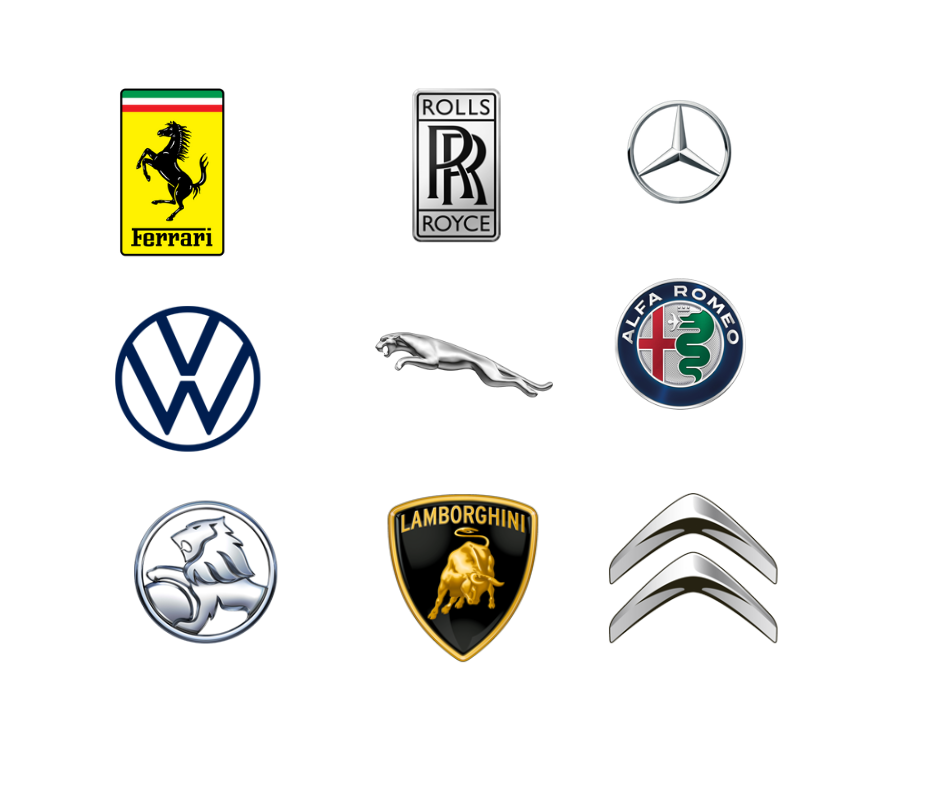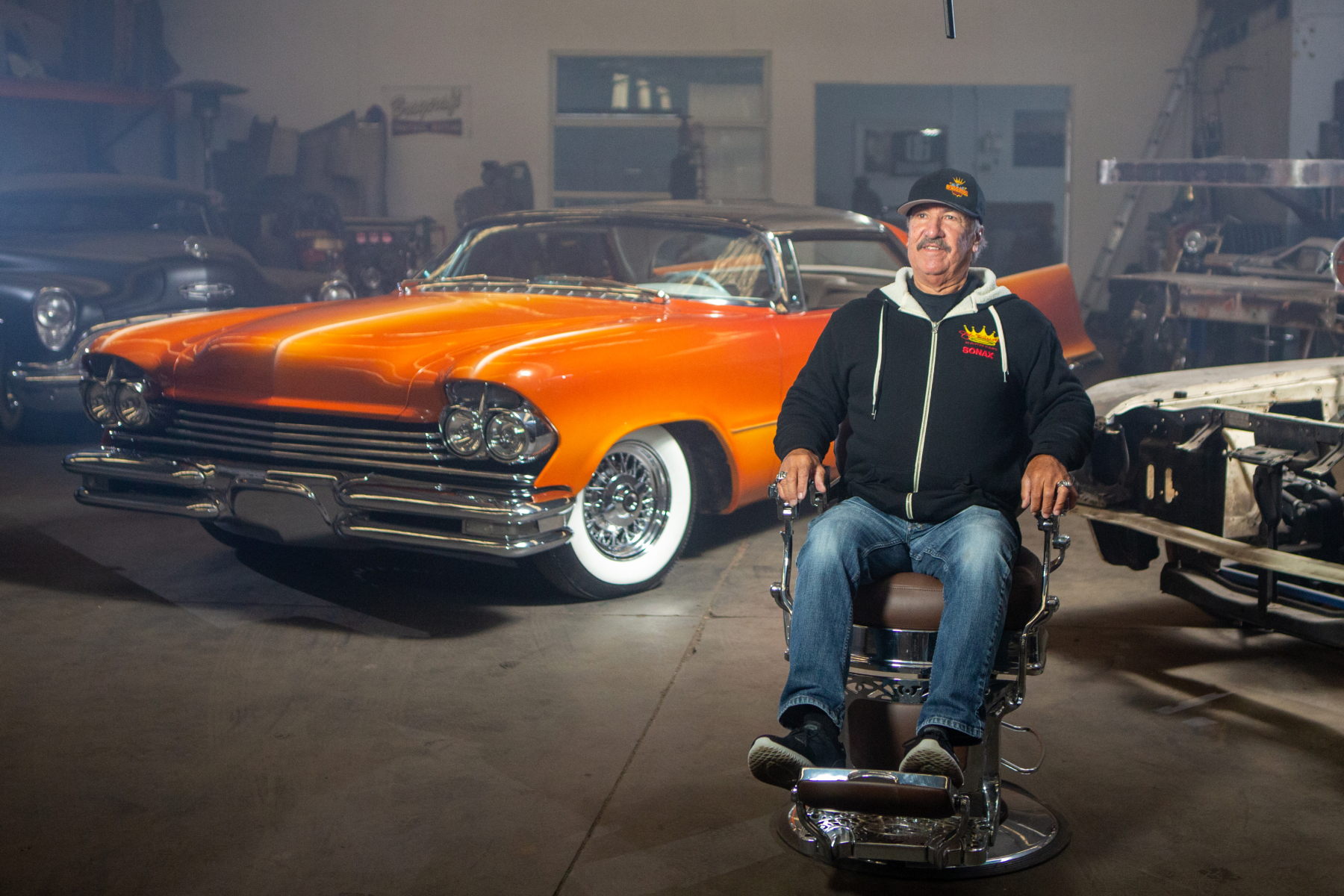
The badges that make instant recognition of the world’s most prominent automotive brands so easy have also become metaphors for the cars they represent.
Watch a Formula One race telecast and the commentator may reference a battle between the ‘Prancing Horse’ and ‘Three-Pointed Star’. Viewers with any awareness of the sport will know that the cars involved in such a clash will be from Ferrari and Mercedes-Benz.
Vehicle emblems might result from detailed research and complex design resources, but that’s unlikely. Most originated more that century ago, probably from the pen of some anonymous graphic artist who had no idea that their design would transcend generations.
Many brands shamelessly ‘borrowed’ elements of their emblems. Local and national flags, coats of arms, images of animals and motor sport all have featured. Some, like the chequered flag and race winner’s laurel wreath, have found themselves serving as symbols for numerous brands.
Occasionally an automotive emblem can convey an unintended or prophetic message. British brand Gordon-Keeble used a tortoise as the badge on its V8-engined, 220km/h luxury coupe but the company went broke before 100 cars had been made.
As insurers with a focus on seldom-used, often significant cars, Enthusiast is constantly reminded just how diverse the global motor industry has become. We constantly update our listings of vehicle brands and models so car owners who visit via www.enthusiast.com.au can quickly obtain a quote and arrange cover, all day and every day of the year.
What follows is a review of some successful automotive emblems, taken from the ‘classic’ end of the car market and all with interesting tales behind their designs.
Jaguar
Jaguar was renowned for doing the unexpected so it’s no surprise that the brand found space on its vehicles for three different emblems in numerous design variations. During the 1930s, SS Cars as it had been known, introduced a range of sleek saloon and sports models known as ‘SS Jaguars’ with a winged crest as their emblem. War with Nazi Germany saw every reference to’SS’ removed and cars built after 1945 were known simply as Jaguars. To emphasise the imagery, cast and chromed renderings of a stylised cat were used as bonnet mascots and known amongst enthusiasts as ‘The Leaper’. Other models used a round badge bearing the likeness of a snarling Big Cat; it becoming known as ‘The Growler.’
Ferrari
Many years before Enzo Ferrari began building cars, he was a successful racing driver, first with Alfa Romeo then Fiat. In 1923 he won an obscure event, the Circuito del Savio, and was awarded a shield carrying the emblem of a World War 1 flying ace who had been killed shortly before the war ended. It was the front end of a prancing horse against a yellow background symbolising Modena and would subsequently feature on every car that Enzo raced and every production Ferrari but one. That was the Dino V6, built to commemorate the tragically short life of Ferrari’s son Dino.
Citroen
It is said that the designer of Citroen’s emblem wasn’t paid very much so he didn’t put much effort into the job. That’s a lie, because the origins of the emblem date back directly to the brand’s founder, Andre Citroen, and his acquisition of rights to a helical gear design used in the differentials of his early cars. The gears as they moved formed a ‘dual chevron’ pattern which young Andre adopted as the symbol of his cheap and simple products. As Citroen’s presence in the world market grew, the emblem became more stylised while always maintaining its very recognisable shape.
Lamborghini
Without Ferrari and its autocratic founder, there would very likely been no Lamborghini. Tractor manufacturer Ferruccio Lamborghini bought a Ferrari but found so many problems he complained and received an unsatisfactory response from Snr Ferrari. In a huff, Lamborghini engaged designers and the world’s greatest automotive stylists to create a line of Lamborghini sports cars, including the elegant Miura. The emblem needed to be more aggressive and evocative than a prancing horse so Lamborghini, who had been born under the Taurus star sign and was a long-time enthusiast of bullfighting chose the image of this powerful animal with its head down and charging aggressively.
Alfa Romeo
The brand began life in 1910 as plain old A.L.F.A. (Anonima Lombarda Fabbrica Automobil if you needed to know) before being taken over by engineer Nicola Romeo and renamed. The origins of the A-R symbol are a good deal more complex though and open to interpretation. On one side the stylised red cross is an emblem of Milan, dating back to the era of the Crusades. To the right is a convoluted rendering of a snake with a human figure in its jaws. This element of the Alfa emblem is said to represent the House of Visconti – a famous Milanese family. Pre-1982 designs also featured a crown which commemorated Alfa Romeo’s 1925 victory in the World Championship of Makes.
Mercedes-Benz
Dominance of transport on ‘Land, Sea and Air’ is the official explanation for a symbol that ranks among the most recognisable in the automotive world. However, the ‘Tri-Star’ as it has become known traces its origins to 1872; many years before such dominance would have been contemplated by the pioneering Daimler family. Three and four-pointed versions of the symbol were trade-marked and in 1926 when Daimler merged with Benz, each partner contributed an element to the business’s new symbol. The wreath came from sports-oriented Benz and Daimler provided its evocative star.
Rolls-Royce
Should you hear a car lover refer to one of these elegant English saloons as a ‘Royce’ rather than the more common ‘Rolls’ there is a reason. The entwined Rs that form the brand’s logo celebrate the surnames of engineer Henry Royce who was largely responsible for the brand’s reputation for design excellence and Charles Royce; a car salesman with the contacts to ensure Royce’s products were noticed in the right places. Even more familiar than the conjoined Rs is the mascot that began life as one Rolls-Royce owner’s flight of fantasy. Arms outstretched and minimally garbed, the ‘Spirit of Ecstasy’ was inspired by a figurine fitted to a car by this owner in tribute to his much younger lover.
Volkswagen
Just who designed the simple but universally recognisable Volkswagen logo is unknown, but that person certainly knew who was signing the cheques. The initial ‘VW’ roundel featured elements of the Nazi swastika, displayed in a way that echoed an ancient Nordic symbol for ‘victory’. In 1945 when the Volkswagen factory and simplistic People’s Car design fell into British hands, the occupying military decided to resume production and use a simplified version of the 1939 logo. Over the course of decades, the logo has evolved but never lost its key elements; the V for Volks and W for Wagen meaning, in German, the People’s Car.
Holden
‘Australia’s Own Car’ began life as ‘Australia’s Own Carriage.’ Horse-drawn vehicles were staple products for Holden & Frost before the company changed its name and moved into the arena of motor body building. In 1928, Holden commissioned a new logo; the successful design showing the powerful image of a lion rolling a stone and said to depict human-kind’s inspiration to invent the wheel. In 1948, when Australia’s Own Car was launched, the emblem was incorporated into the 48-215 model’s grille and large, domed hubcaps. It changed several times (in 1969, 1994, 2014 and finally in 2016) but none of the revised designs ever tried to eliminate the lion playing with its ball of stone.

